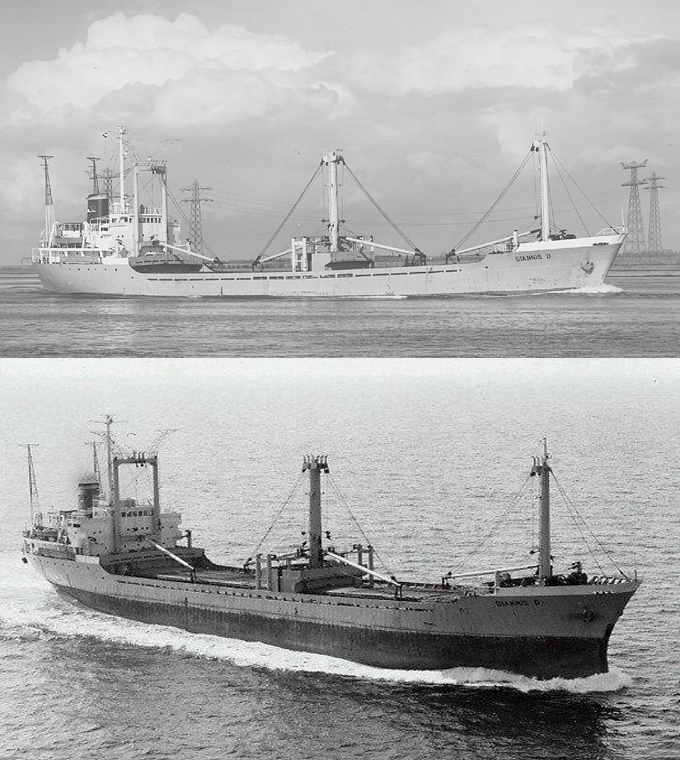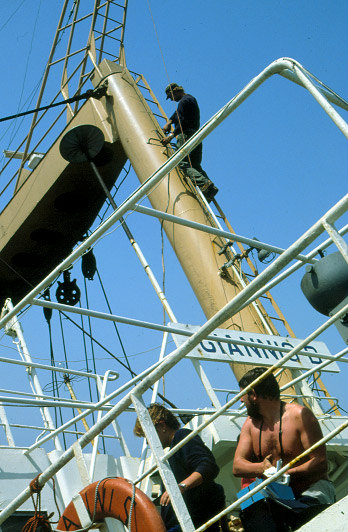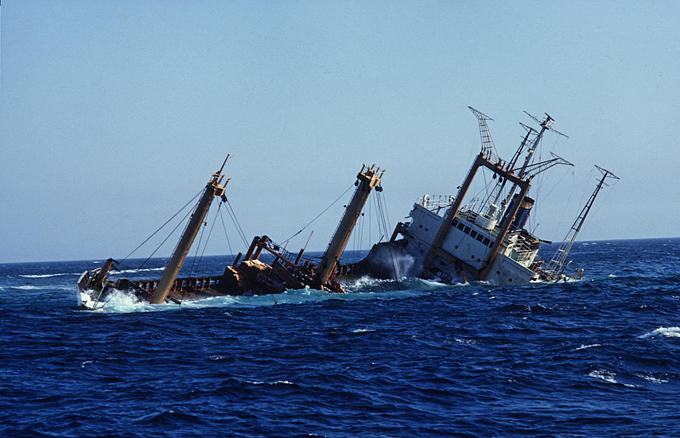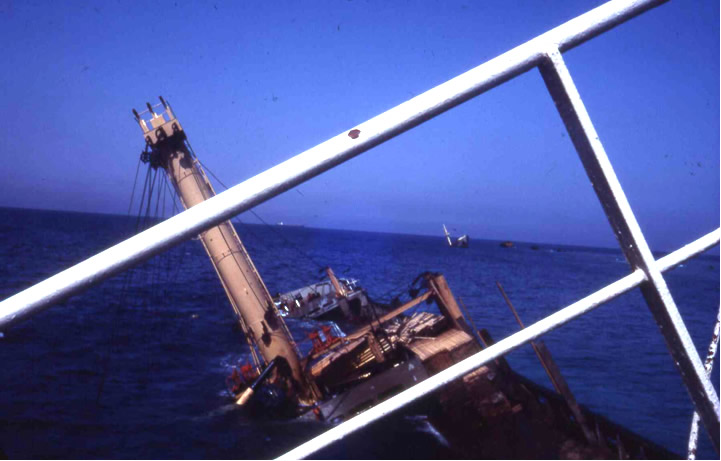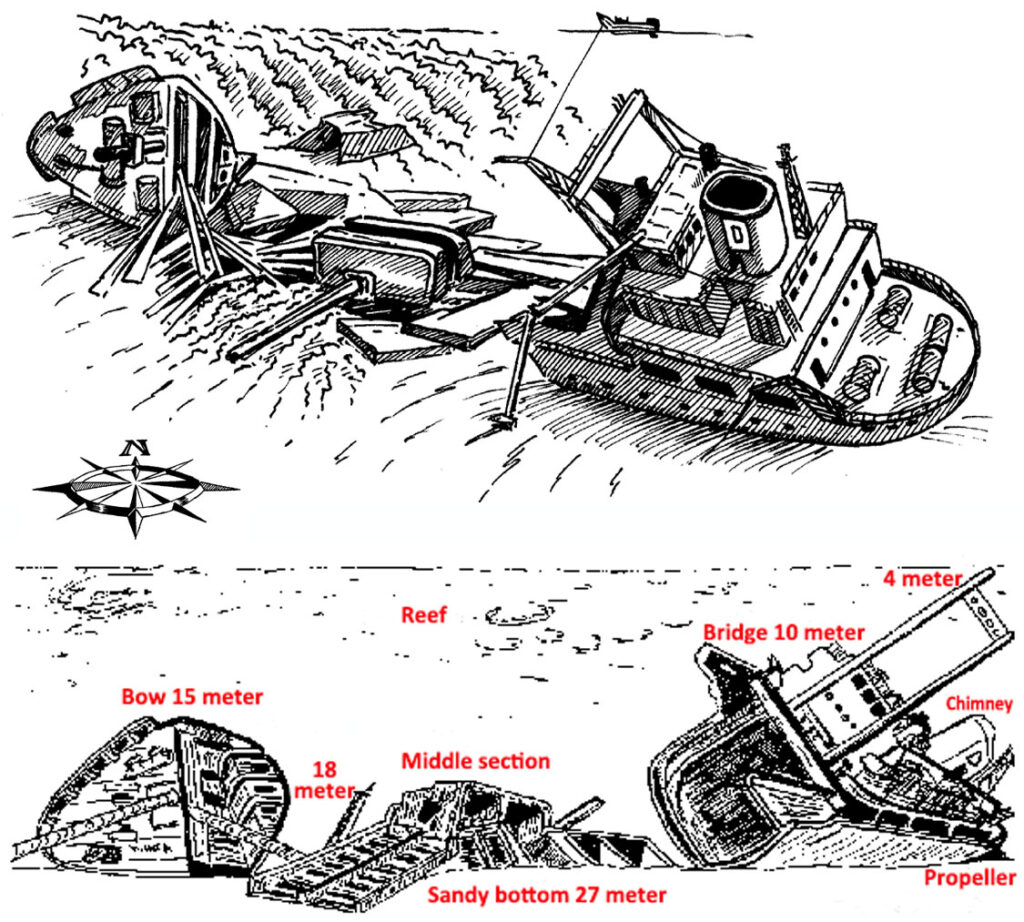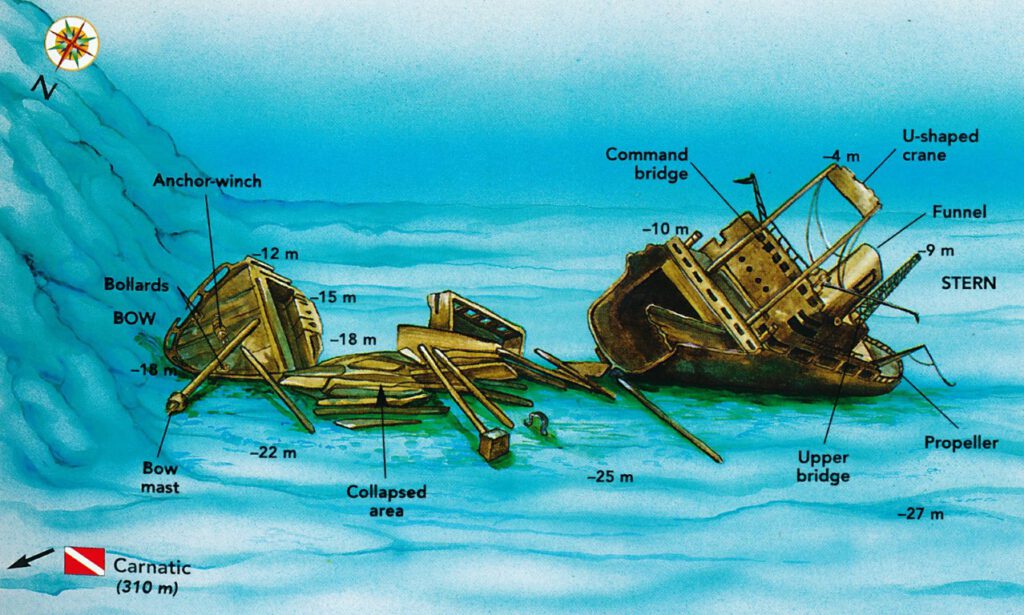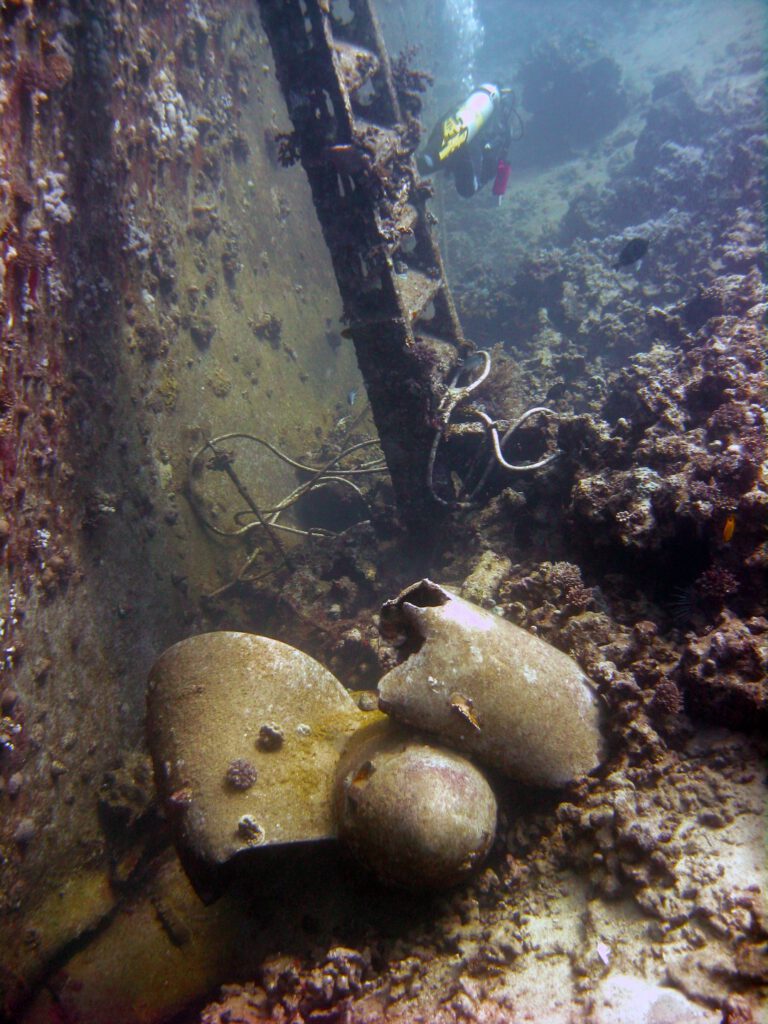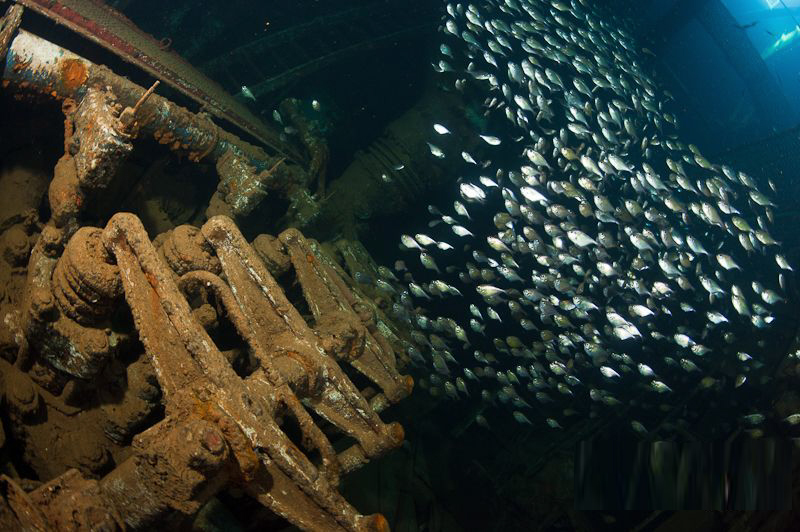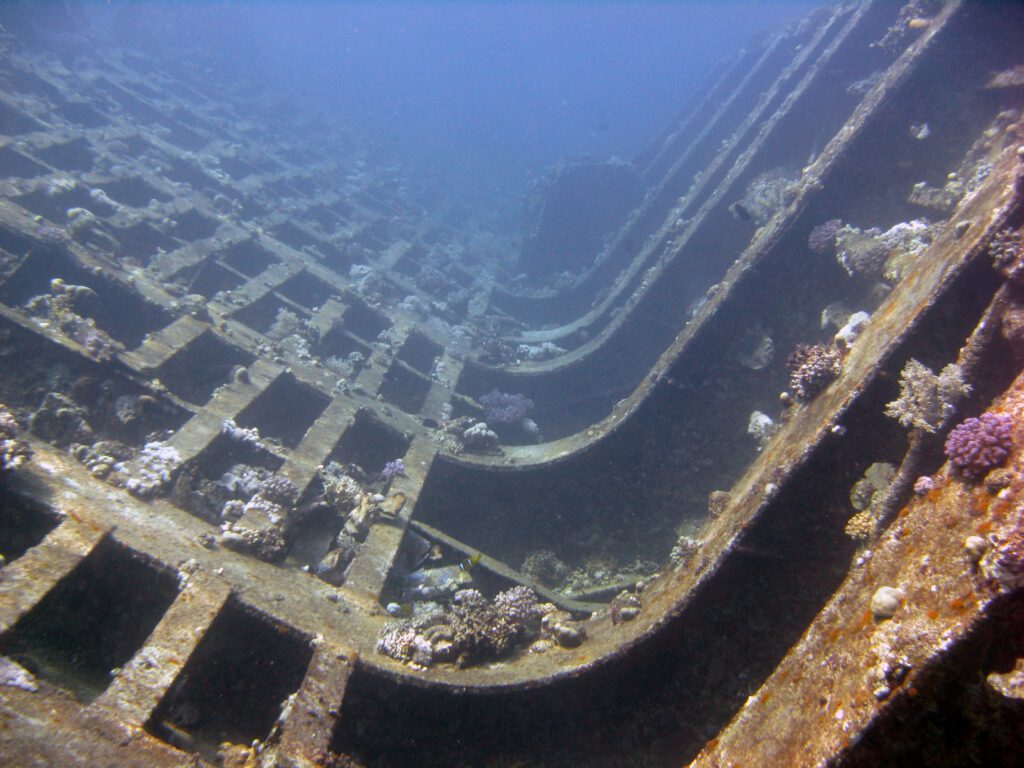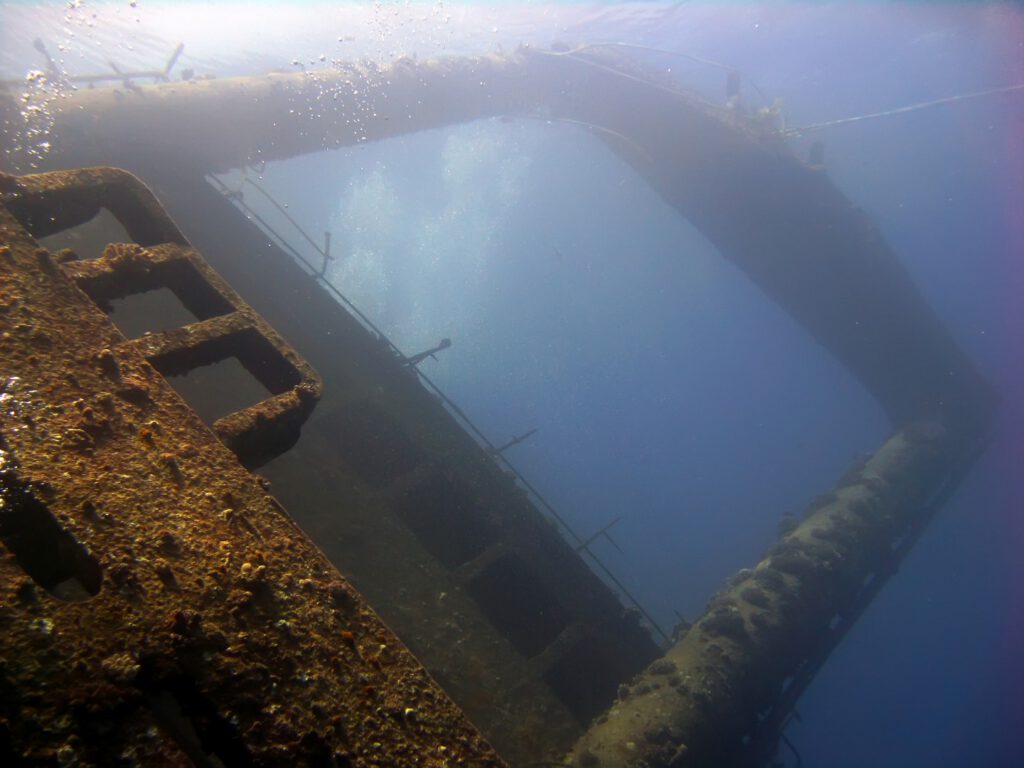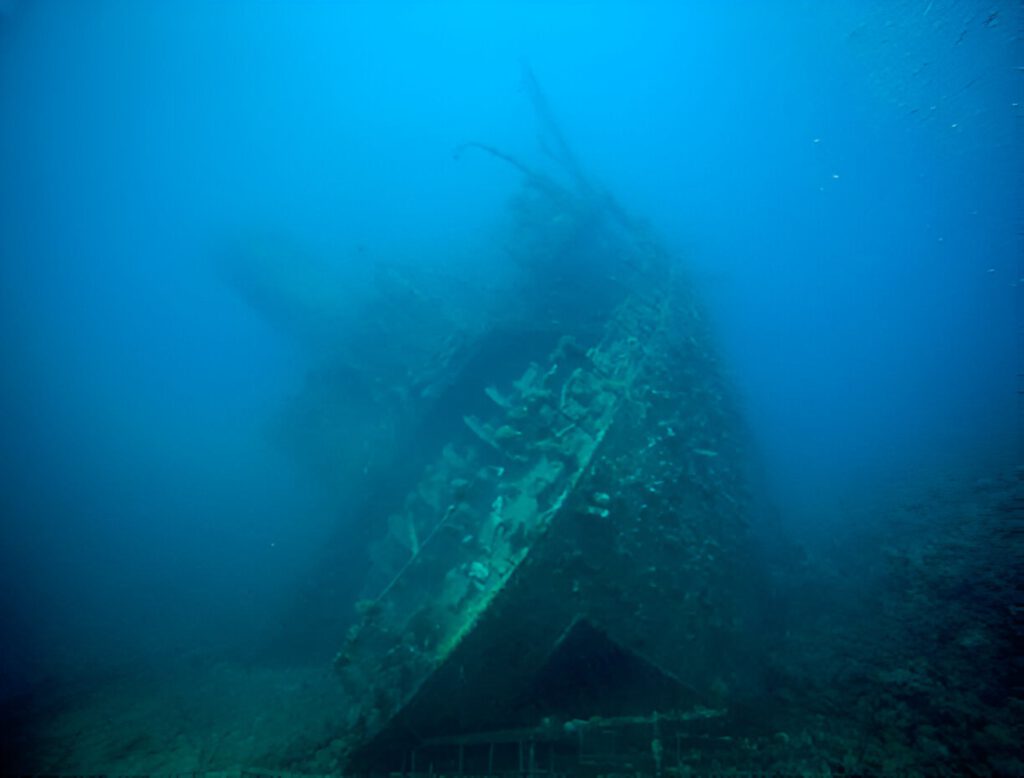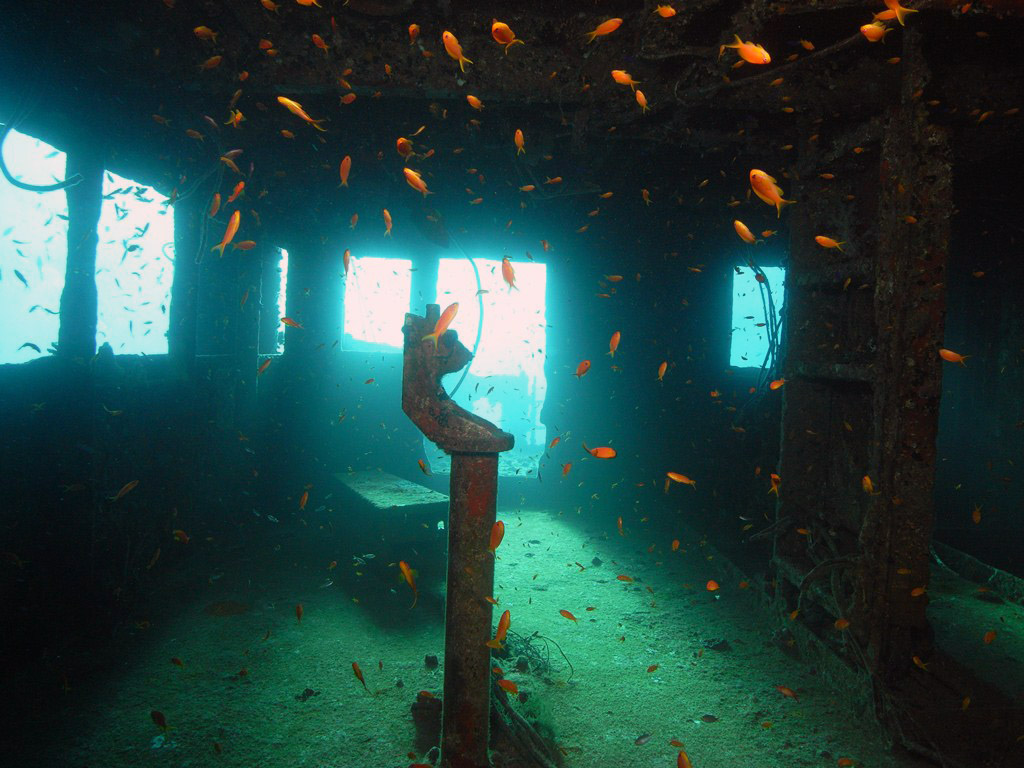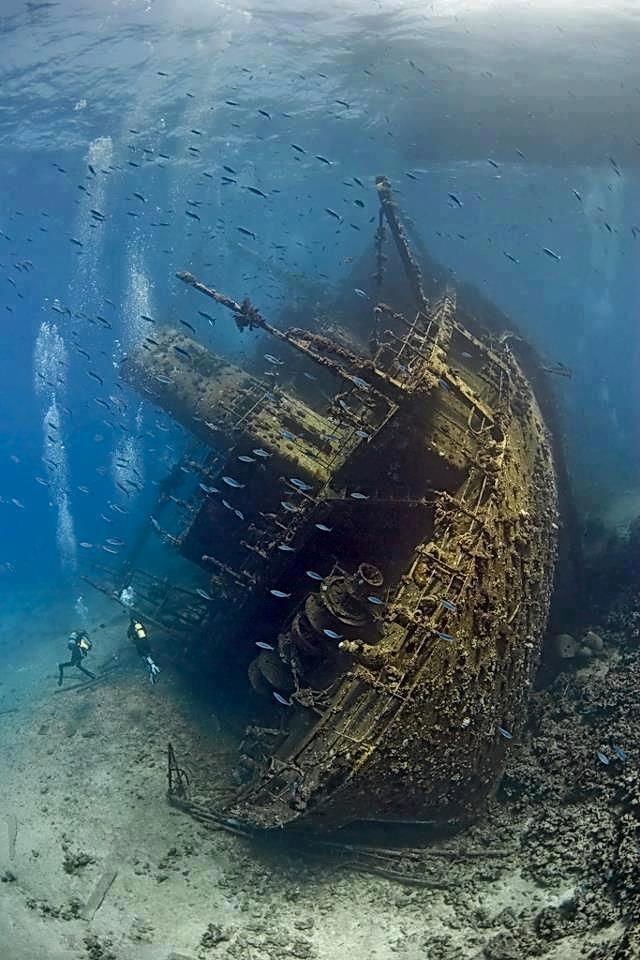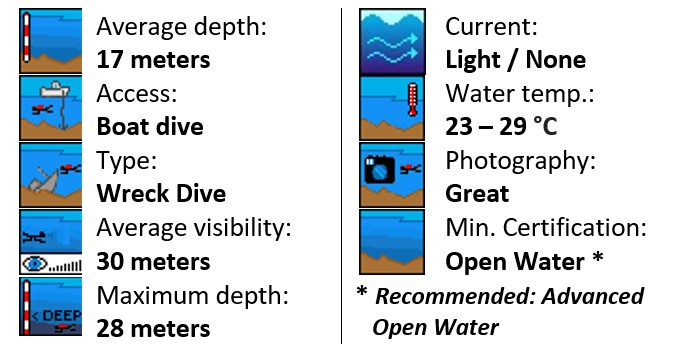The Giannis D (Abu Nuhas - Egypt)
The Giannis D, originally named Shoyo Maru, was a 99 meter cargo ship built in 1969 in Japan. On her last voyage in 1983, the Giannis D hit the reef at Shaab Abu Nuhas.
This wreck is very popular with UW photographers. This truly spectacular wreck is another ‘must see dive site’ if you are diving the North Red Sea.
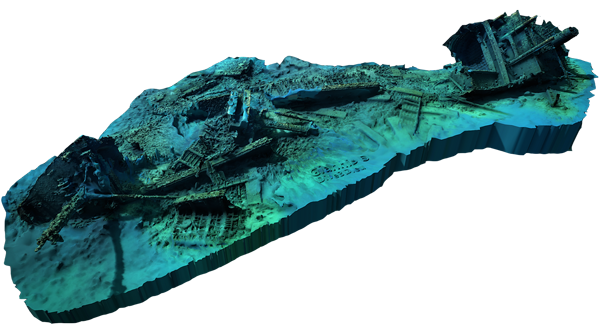
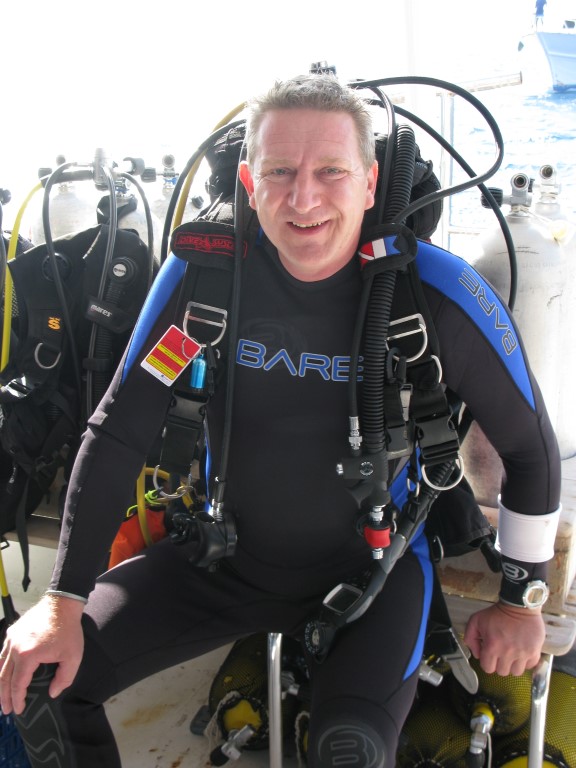
This article was is part of the “Get wrecked” series written by Edwin and originally published in the diving magazine of Lucky Divers Rotterdam (The Netherlands)
You can view the article by clicking on the image
NOTE: At this time the PDF of the published article is only available in Dutch.
Sorry for the inconvenience.
Click to view the original article as PDF (Dutch)
The Giannis D (Abu Nuhas - Egypt)
The “Giannis D. (Danae)” is a large Greek cargo ship built in 1969 which struck the reef of Nabu Nuhas on April 19, 1983.
It is also known as the “Wood Wreck” because of its cargo which consisted of softwood. After she had sailed into the reef, it would take more than a year before she would break into two pieces and then disappear completely below the surface of the Red Sea.
NOTE: We make use of “Sketchfab” click HERE to view the navigation controls
Click on the 3D model below to move it around
All credits to the above Photogrammetry model goes out to Holger Buss
The story & the dive
The data
- Type : Cargo ship
- Tonnage : 2932 tons
- Year : 1969
- Length: 99.5 meters – Width: 16.0 meters
- Date of Sinking : April 19, 1983
- Minimum depth of wreck : 6 meters (on top of bridge)
- Maximum depth to seabed: approx. 28 metres
- Current location: 27° 34′ 42″ N, 33° 55′ 24 E
- (Northwest Point of the Sha’ab Abu Nuhas Reef, Egypt)
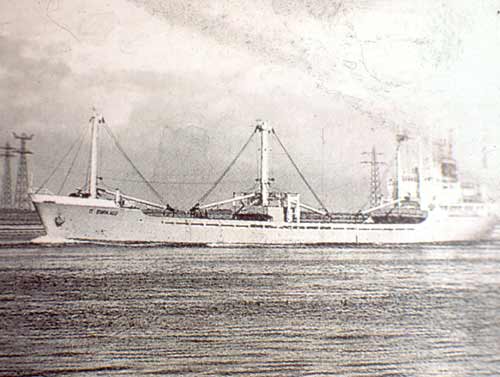
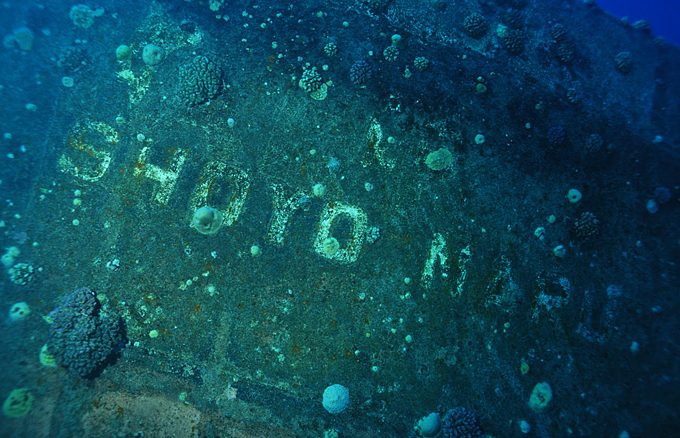
The name “Shoya Maru” can still be read on the ship.
The story
The Giannis D. was a large and modern cargo ship.
The wreck is also called Dana after the large D that is still visible on the chimney.
The Giannis D was launched in 1969 under the name Shoyo Maru, she was built by the Kuryshima Dock Company in Imabari, Japan. It was a standard cargo ship of 2,932 tons.
On the bow the word ‘Markos’ can also be read; This was one of the original names after 1975. In the area the wreck is called ‘Dana’, after the large ‘D’ that is still visible on the chimney (after Dumarc shipping company)
The engine of the ship was built at Akasaka Tekkosho KK in Yaizu, Japan and consisted of a 6 cylinder diesel engine with the power of 3000 HP with which a speed of 12 knots could be reached. The Giannis D sailed under its original name (Shoyo Maru) until 1975, in 1975 the ship was sold and given a new name: Marcos.
In 1980 the ship was sold again, this time to the Dumarc Shipping and Trading Corporation in Piraeus, Greece. Here the ship got her last name: Giannis D. In April 1983 the Giannis D was loaded with coniferous wood in the port of Rijeka (Croatia) part of the cargo was destined for the Saudi Arabian port of Jeddah, the rest was destined for Hodeidah on the coast of Yemen.
In the early hours of April 19, the Giannis D. passed the Suez Canal and sailed south through the Gulf of Suez.
The captain thought that 600 miles from his destination, only the open waters of the Red Sea lay ahead of him. He handed over the helm to his first officer and then went to bed himself. Unfortunately, he had not taken Shaa’b Abu Nuhas into account….
Around 03:30, while the captain was sleeping, the ship sailed on “Full Speed Ahead” on the northwest tip of the reef.
The crew was transferred by an Egyptian tugboat to the nearby Santa Fe platform where they were then taken by helicopter to Ras Shoke. Everyone survived the collision with the reef.
It took almost a year before the ship would slide off the reef and disappear in 2 parts to her final resting place at the bottom of the reef.
In the early morning of April 19, 1983, wreck experts Lawson Wood and Peter Collings were awakened by the crew of the “Lady Jenny III”, the live-aboard ship on which they were staying. The captain had just received an SOS from the Giannis D. So a little later they were witnesses to the collision that had taken place just before. So we cannot speak of a real ‘discovery’ of the wreck here.
The wreck
The ship is at a maximum depth of about 28 meters, at an angle of 45 degrees, sloping to port with the bridge in very good condition. The bow is also interesting but is a long swim because the wreck is broken in two pieces in the middle and bow and bridge are therefore far apart.
In calm weather, the wreck is already clearly visible from the surface. The tip of one of the masts even protrudes up to 4 meters below the water surface.
This is also often used by the visiting dive ships to moor their ship. The stern of the Giannis-D, which is still in good shape, is at the deepest point.
The dive
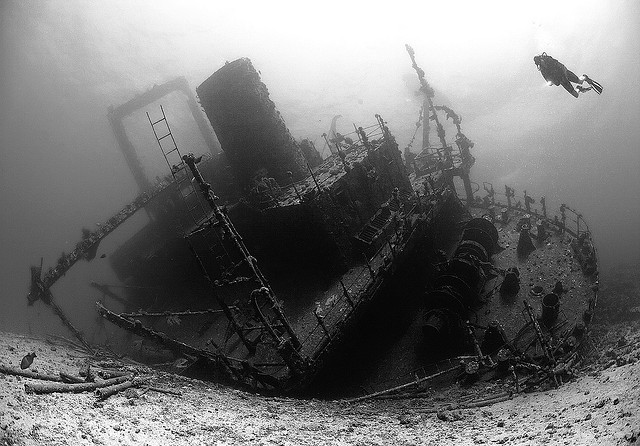
“A sickening wreck”;
The wreck is easily accessible but beware of vertigo due to the ship’s sloping position.
“You swim through one of the many doors.
Through the portholes, round beams of light shine on the floor. Fish are scurrying around everywhere. A doorway leads to another room, where hardly any light penetrates.
In the light of your lamp, you can distinguish a staircase.
This leads up, no, downwards or….?
You swim on.
In the distance you can see a blue glow through one of the many cracks. On the side you recognize a toilet bowl, strangely a toilet bowl against the wall. ! You become a bit light-headed, your stomach starts to play up. You quickly look at your depth gauge 25 meters.
Surely you are sure that you were no deeper than 15 meters when you entered the wreckage…… You didn’t go down anywhere, did you? . You get a slight feeling of restlessness over you. Not far from you, bright blue light penetrates through a wide crack in the hull. This exit is closed by a moving wall of glassfish that opens like a curtain when you get closer……”
Yes, it takes some getting used to; diving on the Giannis-D.
Some wrecks come down neatly on their bows when sinking and seem to continue their journey underwater.
A good example of this is the Thistlegorm. Orientation on such a wreck is no problem at all.
It is always clear what is up and what is down. Other ships come to lie on their side, in most cases it is clear what is up and what is down. It does take a lot more effort to recognize the space you are in.
Ceilings turn out to be walls and walls are floors.
But it gets really tricky when it lies on the bottom of the ocean like a ship at an angle of about 45 degrees. In that case, orientation is almost impossible.
And that is precisely the case with the Giannis-D. !
To minimize missing the dive, it is best to start the dive on the port side, then go through the propeller to the rear of the ship.
There are several entrances to enter the ship. If you swim around the propeller towards the starboard side, you can, for example, go straight into the engine room through the ventilation grilles.
This imposing space is still in fairly good condition.
Immediately you notice the rows of valves on top of the engines.
If you swim back up in the engine room, you can reach the place where there is still an air bubble. In this space of a few square meters it is better to keep your regulator in your mouth and there is a good chance that your diving suit will need a good wash after this dive!
Through the engine room, which is also fully equipped as a workshop including lathe, etc., you can swim through a passage into the large hold of the middle section. Not much is left of the nave and is also the least attractive to look at.
Here and there there are still large metal partitions on the seabed. Continue your way through and over the cargo hold towards the bow. The bow is much further towards the reef.
It is definitely worth taking a look here.
Swim a few meters from the bow and then turn around with the reef in your back…. now you have one of the most beautiful ‘kodak moments’ of the Giannis D.
The bow is surrounded by glassfish and covered with soft corals. The railing and anchors are still clearly visible.
Continue your way back over the cargo hold to the bridge.
This is located at a depth of about 10 to 12 meters.
The wheelhouse is easily accessible to everyone and you can leave it at any time through the doors or windows.
Here too, you will immediately notice the feeling of disorientation. Diagonally behind the wheelhouse is the chimney with the previously discussed “D” on it.
The gigantic arch mast, which is located directly in front of the wheelhouse, is certainly an attractive photo opportunity.
You can then end the dive by ascending via this ‘bow mast’.
This extends to just a few meters below the water surface.
An ideal point to keep your deco stop hanging from the mast.
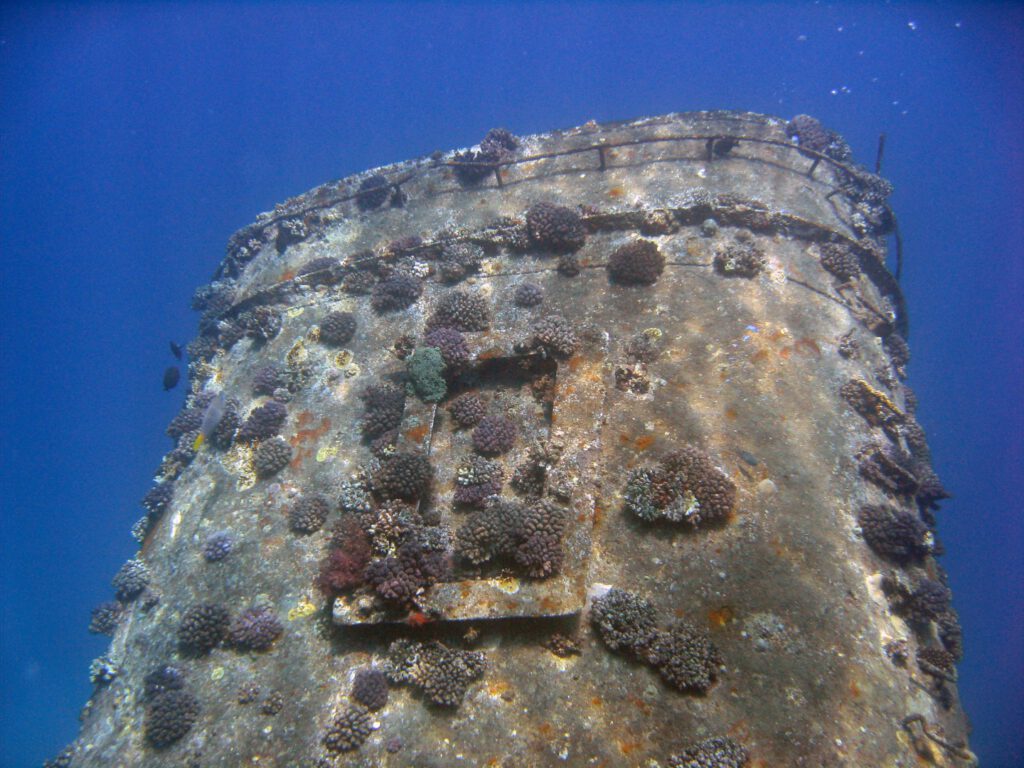
The chimney with the ‘D’
(Click to enlarge)
Marine life
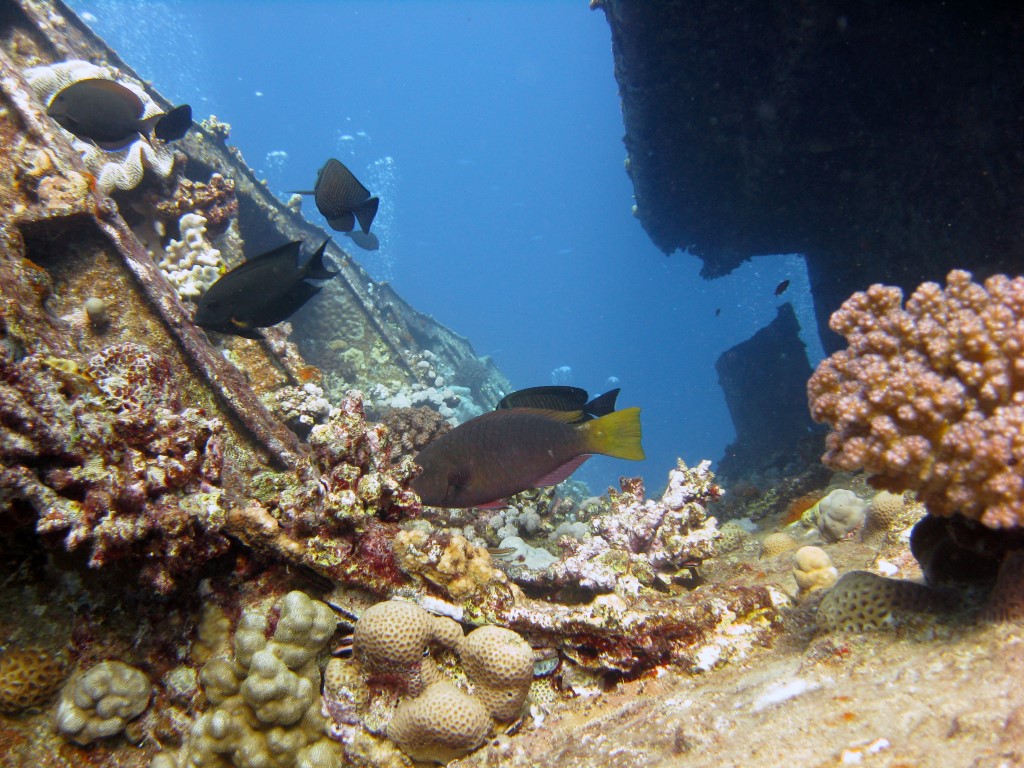
The beautiful vegetation on the wreck
(Click to enlarge)
The wreck is beautifully overgrown with different types of anemones, hard and soft corals. In and around and on the wreck there are countless fish, from Batfish to moray eels, from lionfish to scorpionfish etc. etc.
The wreck is also surrounded by large schools of perch and barracuda.
I have not yet been able to experience it myself, but dolphins are also seen here with great regularity. This is because a large school of dolphins lives in the vicinity of Abu Nuhas.
Conclusion
I have been able to dive on the Giannis D. many times, just 2 times I have not (or hardly) been into the wreck.
I also liked these two dives very much. Especially the size of this ship is very impressive.
Once I combed the inside of the ship, and I have to say for an enthusiastic wreck diver this is ‘heaven’.
The engine room / workshop is really beautiful to see.
Penetrating the wreck is certainly not suitable for novice wreck divers.
Your disorientation can be so great that sometimes you really don’t know whether you are hanging upside down or not (long live the bubbles….).
The wreck is almost always free of currents as it is protected by the reef.
In short, a beautiful wreck that can be viewed by every diver, regardless of your level of education.
Dive information
As an open water diver you can dive above and around the wreck.
Of course, keep in mind your personal and depth limits.
For advanced divers, the ship is very easy to penetrate, but keep in mind that this wreck can cause serious disorientation. The strange angle at which the ship lies can confuse your brain….
Penetration of this wreck is absolutely not necessary, this wreck has plenty to offer on the outside.
Partly because of this, the wreck is very popular among divers, which means that it can sometimes be very busy….


